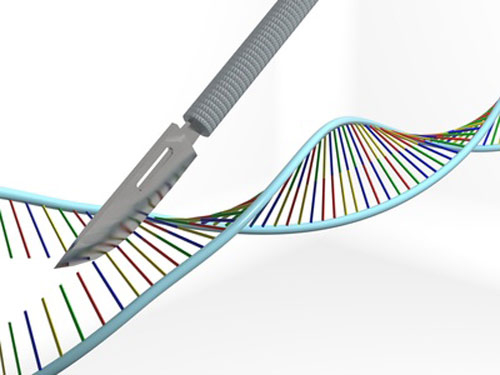A clinical trial has not only established the safety of genetically engineered T cells in HIV patients, it has also demonstrated that gene therapy can boost resistance to HIV. These heartening outcomes emerged from a study of 12 HIV-positive patients. In some of these patients, viral loads remained decreased even after retroviral drug therapy (ADT) had been suspended.
In this study, led by researchers from the University of Pennsylvania, the patients received infusions of their own T cells—after the cells had been modified by means of zinc finger nuclease (ZFN) technology. This technology was used to induce a mutation similar to a naturally occurring mutation known to confer resistance to HIV. Specifically, ZFN was used to alter the CCR5 gene, which codes for a protein that is expressed on the T cell’s surface. For HIV, this protein is like a lock it can pick to gain entry to the T cell. Altering the CCR5 gene so that it produces a dysfunctional version of the protein essentially “gums up” the lock.
Prior to the present study, attempts to give HIV patients the benefits of the CCR5 mutation, which occurs in just 1% of the general population, were limited to allogenic transplantation. For example, in a celebrated case, a man diagnosed with acute myeloid leukemia received a stem cell transplant from a donor who had the CCR5 mutation in both alleles. After treatment, the man—who subsequently became known as the Berlin Patient—was declared functionally cured of HIV. He has remained off ADT since 2008.
Unfortunately, allogenic transplants are not a practical treatment for HIV patients who do not have blood cancers. The transplants require lengthy hospitalizations and carry a high mortality risk. Also, as researchers have learned from the experience of two Boston patients, the transplants are not effective unless the donor has the mutated gene in both alleles. Initially, these patients were also thought to be functionally cured after they received their transplants. But the benefits were short-lived.
In an attempt to develop a more effective therapy based on the CCR5 mutation, University of Pennsylvania researchers led by Carl H. June, M.D., and Pablo Tebas, M.D., elected to try infusing CD4 T cells in which the CCR5 gene was rendered permanently dysfunctional by a ZFN. These researchers described their work March 5 in the New England Journal of Medicine (NEJM), in an article entitled “Gene Editing of CCR5 in Autologous CD4 T Cells of Persons Infected with HIV.”
As indicated in a University of Pennsylvania press release, the researchers infused modified cells into two cohorts of patients, all treated with single infusions—about 10 billion cells—between May 2009 and July 2012. Six were taken off antiretroviral therapy altogether for up to 12 weeks, beginning four weeks after infusion, while six patients remained on treatment.
Positive results reported in the NEJM article included the following: “The median CD4 T-cell count was 1,517 per cubic millimeter at week 1, a significant increase from the preinfusion count of 448 per cubic millimeter. The median concentration of CCR5-modified CD4 T cells at 1 week was 250 cells per cubic millimeter. This constituted 8.8% of circulating peripheral-blood mononuclear cells and 13.9% of circulating CD4 T cells. Modified cells had an estimated mean half-life of 48 weeks.”
Although the number of modified T cells decreased over a number of weeks in the blood, the decrease of modified cells was significantly less than that of unmodified T cells during ADT treatment interruption. Another encouraging result concerned viral loads: They dropped in four patients whose ADT treatment had been suspended. Also, in one of these patients, the viral load dropped below the limit of detection.
It turned out that this patient had one naturally mutated CCR5 allele. “Since half the subject’s CCR5 genes were naturally disrupted, the gene editing approach was building on the head start provided by inheriting the mutation from one parent,” said Bruce L. Levine, Ph.D., one of the researchers. “This case gives us a better understanding of the mutation and the body’s response to the therapy, opening up another door for study.”
Summing up, Dr. June said, “This study shows that we can safely and effectively engineer an HIV patient’s own T cells to mimic a naturally occurring resistance to the virus, infuse those engineered cells, have them persist in the body, and potentially keep viral loads at bay without the use of drugs.” Looking forward to expanding on these results, Dr. June added, “This reinforces our belief that modified T cells are the key that could eliminate the need for lifelong ADT and potentially lead to functionally curative approaches for HIV/AIDS.”


